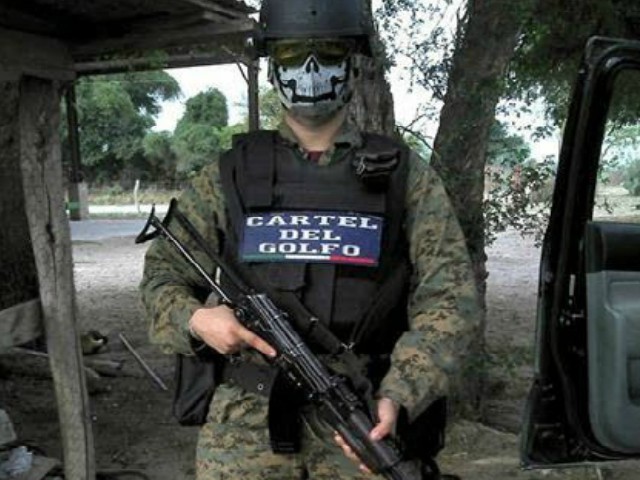In the border city of Matamoros, the Gulf Cartel exercised its powerful influence by silencing local news outlets regarding the murder of one of its lieutenants, Gumercindo “El Gume” Perez Maya. After authorities responded to reports of a foul odor from a running vehicle near a cemetery, they discovered El Gume’s body showing signs of severe torture, strangulation, and bruising. Despite the violent circumstances of his death, a jubilant funeral attended by hundreds took place, organized under the cartel’s directive to keep this event off the media radar and control the narrative surrounding El Gume’s demise.
El Gume, a prominent mid-level boss within the Gulf Cartel, was believed to have been slain by his own faction following allegations of betrayal. Early warnings had been issued advising him not to return to Matamoros after a brief semi-retirement, particularly following his involvement in a financial dispute with other lieutenants. This conflict highlighted the deepening rift within the Gulf Cartel, especially between its factions, the Escorpiones and Ciclones, as tensions escalated over leadership and territory in the violent border region.
The ongoing violence in Matamoros has roots in an intense turf war involving local factions and rival groups, particularly the Metros faction from nearby Reynosa. The frequent clashes between heavily armed convoys contribute to an atmosphere of terror for local residents. In this turmoil, El Gume was known for his cool-headed approach and was well-regarded in the communities of Matamoros and Rio Bravo, where he oversaw human smuggling operations. However, his involvement in a scandal—where an audio recording surfaced of him demanding increased vehicle thefts for the cartel—pointed to the internal struggles and mistrust within the organization.
While El Gume had been arrested multiple times in the past, he had managed to evade serious consequences through bribery and manipulation of the legal system. This pattern of behavior likely contributed to the suspicions against him that culminated in his brutal killing. Following his death, limited information circulated, with relatives of the drug boss posting a death notice on social media as one of the few public acknowledgments of his passing, further underscoring the cartel’s control over the narrative.
As the dust settles on El Gume’s murder, it paints a broader picture of the systemic issues facing regional law enforcement and the media’s role in cartel-dominated areas. Journalists in Matamoros received strict warnings through unofficial channels, reflecting the level of intimidation that exists for those attempting to report on cartel-related violence. The implications of such threats pose significant risks to free press in the region while allowing cartels to operate with relative impunity.
In summary, the tragic fate of El Gume illustrates the complexities of cartel politics and the brutal reality of life in regions controlled by organized crime. The tension within the Gulf Cartel, marked by betrayal and violence, serves as a stark reminder of the pervasive atmosphere of fear and control. While the funeral celebrations stood in stark contrast to the violent circumstances of his death, it also exemplified the challenges faced by those who dare to report on these events in a landscape where criminal organizations dictate the narrative.

